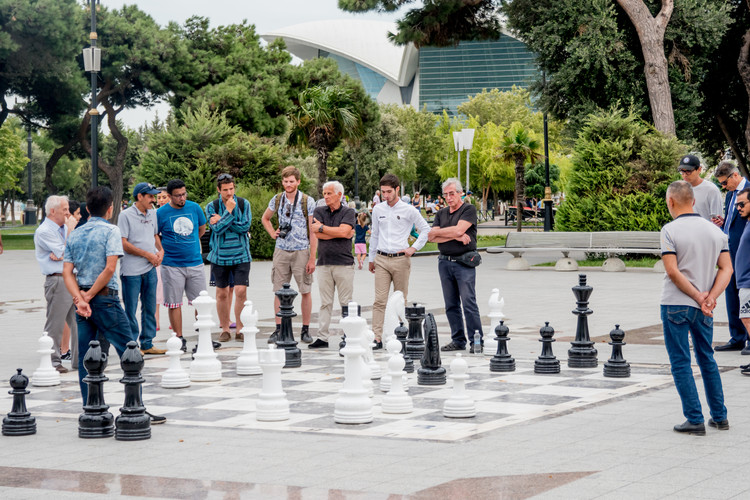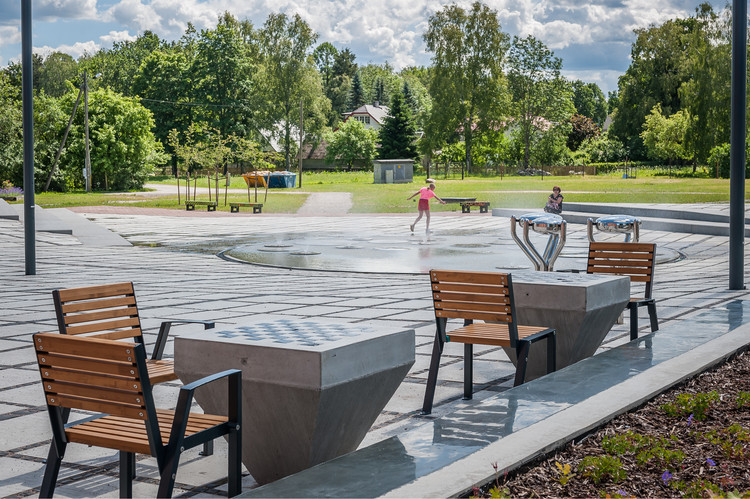
Have you ever wondered why chess sets can be found in parks and other public spaces and contemplated what their role is within these spaces? Studies have shown that sports and games work to reduce stress and improve the overall mental health of the public. Chess, one of world's most popular games, allows two people from anywhere on the globe to play regardless of language barriers, age, gender, physical ability, or social situation.
By combining elements of sport, scientific reasoning, and art, chess' reach is global and has long been used to promote equality, social inclusion, and respect between people and nations.

With over 1500 years of history, chess gave rise to a variety of other games and forms of play, cementing its place as both a pastime and an intellectual sport. Among the European cities connected to the game, the German town of Schachdorf Ströbeck stands out as the chess capital of the world, a title stemming from the imprisonment of a nobleman by Bishop Arnulf de Halberstadt. While in jail, the noble taught the game to the prison guards, who then taught it to the farmers, eventually allowing it to spread to the rest of the townsfolk.

While chess has traditionally been played as a board game, there are versions with human size pieces and even versions where people play as the pieces. No one can be sure of the origins of this form of chess, with literal living pieces, but it was a frequent practice in royal courts of Europe throughout the 15th and 16th centuries. Perhaps the best known example of this practice of human chess is the Italian town of Marostica, which has hosted a game of human chess in its central plaza every other year since September 12, 1454.

More than just a board game, chess and its aesthetic have become a recurring theme in design, lending itself to a myriad of imagery on walls, paintings, flooring, and many other architectural elements.

In numerous cities throughout the world, chess has become a fixture in plazas, parks, and gardens. Within these crowded urban settings, a chess set becomes a meeting point for people from all walks of life and connects them in a way that promotes, not only mental health, but social cohesion. It's a tool for building personal relationships between users and fomenting respect and coexistence that bridges generational divides.

According to various studies, chess has proven an effective tool in helping children understand the consequences of their actions, teaching them to accept rules, and how to win and lose. On top of this, chess sharpens a child's reading capabilities, incentivizes creativity and imagination, promotes interpersonal communication, and prevents addiction to electronic devices and social apps. It increases concentration, analytical capabilities, and critical thinking. For elderly players, it serves as a form of visual and spatial memory training, helping to fight off symptoms of Alzheimer's and other degenerative conditions associated with old age. Even more importantly, it's an opportunity to socialize and combat loneliness, thus proving to be a significant mood booster.

Thanks to its many mental and social benefits, cities across the globe are working to make chess a fixture in their public areas, allowing citizens of every age and background to come together and play. The Urban Chess project by Jesus Medina is just one example of these efforts. The project started in 2017 when the first three chess sets were placed in Maxima Park in Utrecht in the Netherlands. The effort has continued in many other Dutch cities and today, in 2021, it's estimated that there are a minimum of 40 cities throughout the Netherlands with chess sets in their public spaces. The movement is gaining steam in other parts of the world as well, with Spain, Belgium, Argentina, and even Uganda following suit.

Washington Square in New York City, Liberation Square in Sarajevo and the Plaza del Ajedrez, or Chess Plaza, in Lima's Miraflores neighborhood are some of the most notable places to bring chess to the public sphere. Spain, Andorra, Argentina, and Uruguay are working actively to bring the educational benefits of chess to their residents while Chile is hoping to take advantage of its social and therapeutic properties. Even the Paraguayan Parliament has approved the addition of chess to its national educational curriculum, with Mexico not far behind in passing similar legislation. No matter the differences between places and people, chess can bridge the divide, bringing people together and incentivizing them to think, share, and socialize, connecting them with both their community and themselves.










